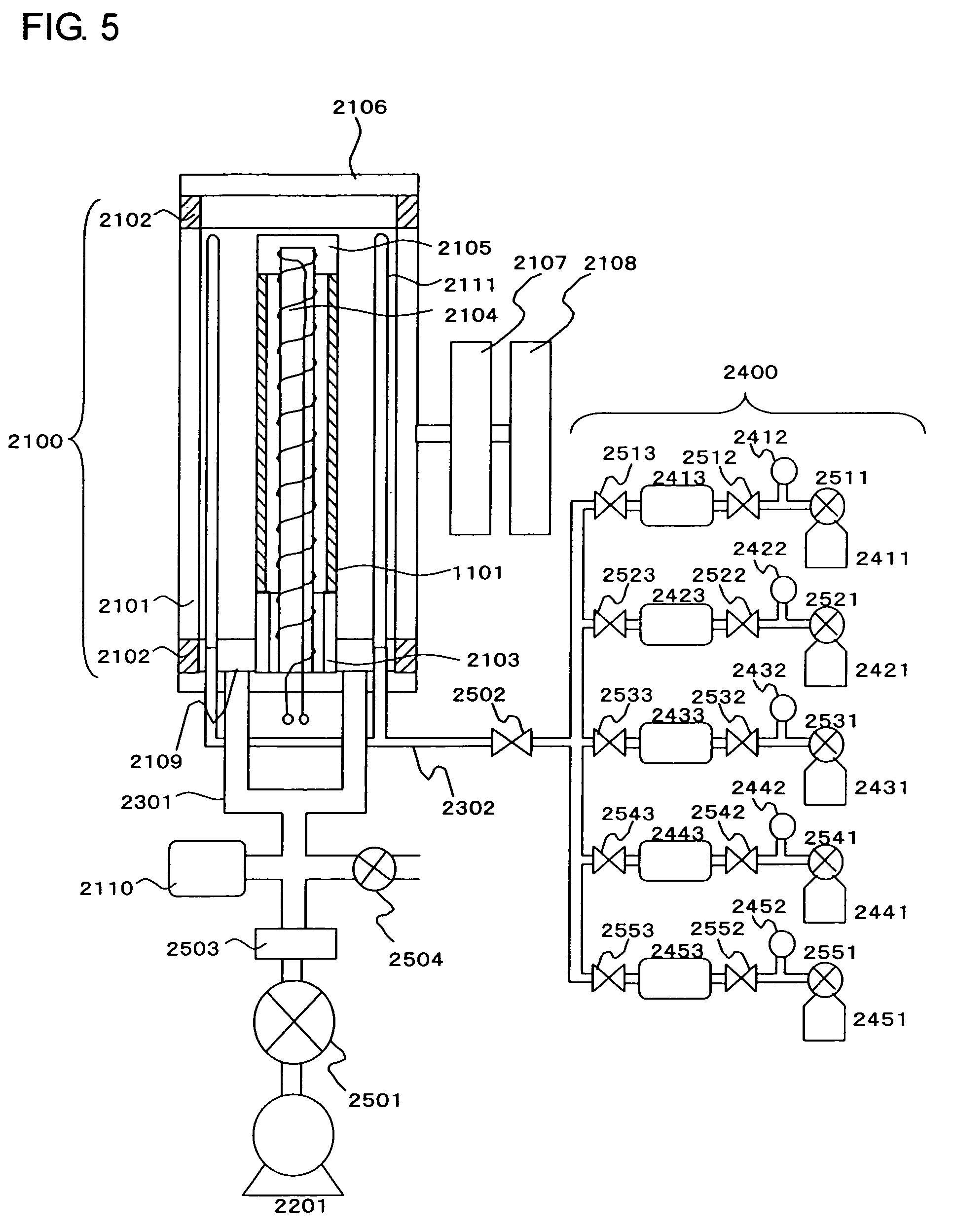Electrophotographic photosensitive member
a photosensitive member and electrophobic technology, applied in the field of electrophobic photosensitive members, can solve the problems of reducing sensitivity, degrading image quality, and unnecessarily requiring such heaters, and achieves excellent charging ability, sensitivity and electric potential properties, and energy saving.
- Summary
- Abstract
- Description
- Claims
- Application Information
AI Technical Summary
Benefits of technology
Problems solved by technology
Method used
Image
Examples
example 1
[0071]An amorphous silicon layer was formed by use of the CVD apparatus shown in FIG. 5, then an intermediate layer composed of a metal oxide and a surface layer composed of a metal fluoride are formed by use of the sputtering apparatus shown in FIG. 6 to produce an electrophotographic photosensitive member, and the electric potential properties thereof were evaluated.
[0072]First, a charge injection blocking layer and a photoconductive layer mainly composed of amorphous silicon were formed by use of the CVD apparatus shown in FIG. 5. As the substrate, an aluminum cylinder of 80 mm in diameter and 358 mm in length was used. The forming conditions of the amorphous silicon layer are shown in Table 1.
[0073]
TABLE 1Charge injectionPhotoconductiveblocking layerlayerGases and flow ratesSiH4 (ml / min. [normal])100100B2H6 (ppm, based on SiH4)20000.5NO (ml / min. [normal])5Substrate temperature (° C.)250250Pressure inside the7070reaction vessel (Pa)High frequency electric0.10.1power (kW)Thickness...
example 2
[0097]An amorphous silicon layer was formed by use of the CVD apparatus shown in FIG. 5, and then an intermediate layer composed of a metal oxide and a surface layer composed of a metal fluoride were formed by use of the sputtering apparatus shown in FIG. 6 to produce an electrophotographic photosensitive member for which the greatest value of reflectance was 20% or less. For the electrophotographic photosensitive member, the initial electric potential properties, the image in the print durability test, and the sensitivity nonuniformity, the sensitivity variation width and the greatest value of reflectance were evaluated.
[0098]In the present Example, an electrophotographic photosensitive member was produced by the same procedures as in Example 1, and the thickness values of the intermediate layer and the surface layer were made the same as those in Example 1. In the present Example, the constituents used respectively for the photoconductive layer, the intermediate layer and the surf...
examples 3 to 5
[0114]In each of Examples 3 to 5, an amorphous silicon layer was formed by use of the CVD apparatus shown in FIG. 5, then an intermediate layer composed of magnesium oxide and having a thickness different from that in Example 2 was formed by use of the sputtering apparatus shown in FIG. 6, and then a surface layer composed of magnesium fluoride was formed to produce an electrophotographic photosensitive member. For each of the produced electrophotographic photosensitive members, the initial electric potential properties, the image in the print durability test, the sensitivity nonuniformity, the sensitivity variation width and the greatest value of reflectance were evaluated.
[0115]In each of Examples 3 to 5, the same substrate as in Example 1 was used, and the formation procedures and the forming conditions for the charge injection blocking layer and the photoconductive layer were the same as in Example 1.
[0116]In each of Examples 3 to 5, after the charge injection blocking layer and...
PUM
 Login to View More
Login to View More Abstract
Description
Claims
Application Information
 Login to View More
Login to View More - R&D
- Intellectual Property
- Life Sciences
- Materials
- Tech Scout
- Unparalleled Data Quality
- Higher Quality Content
- 60% Fewer Hallucinations
Browse by: Latest US Patents, China's latest patents, Technical Efficacy Thesaurus, Application Domain, Technology Topic, Popular Technical Reports.
© 2025 PatSnap. All rights reserved.Legal|Privacy policy|Modern Slavery Act Transparency Statement|Sitemap|About US| Contact US: help@patsnap.com



